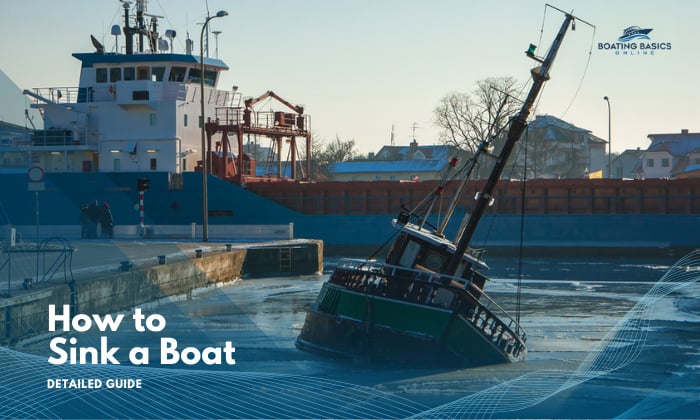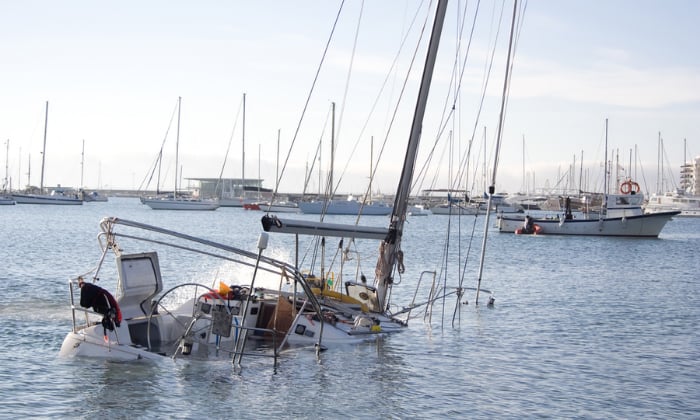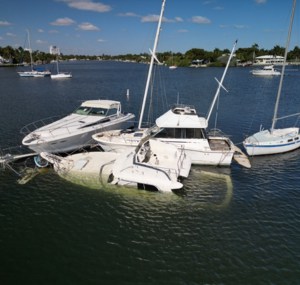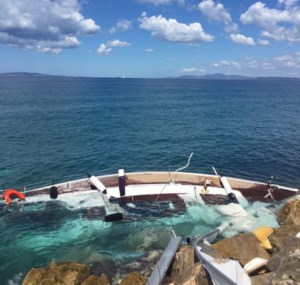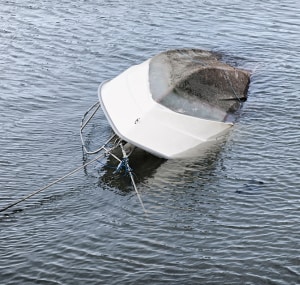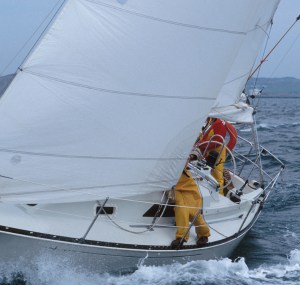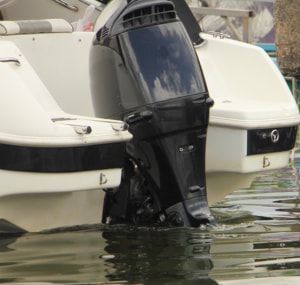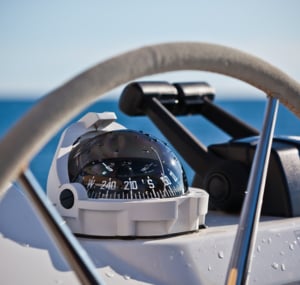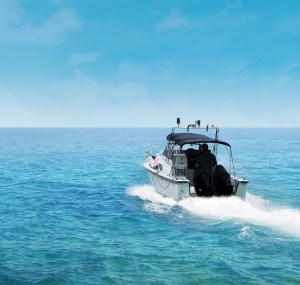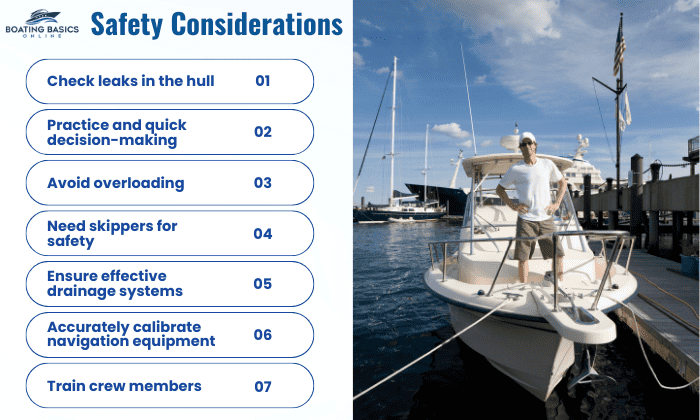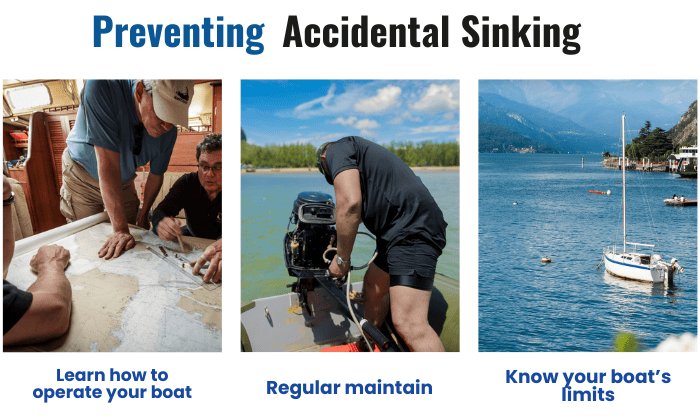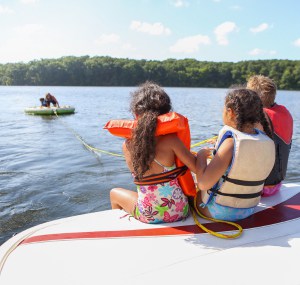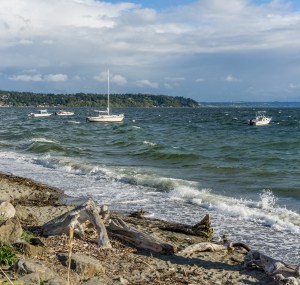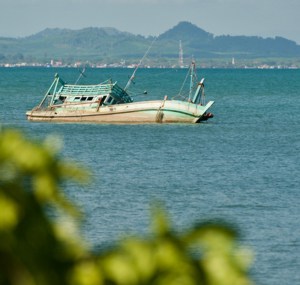So you want to know how to sink a boat. Obviously, I won’t be teaching you how to deliberately sink it on purpose. I know of Youtube videos sarcastically titled as such can be a bit funny, but ultimately, all they ever do is promote unsafe practices.
A boat can sink because of flooding, collision, capsizing, poor water and weather conditions, faulty equipment, a low transom, and other mistakes. Read on to learn how they happen and how to solve them.
Table of Contents
Explaining the Possible Reasons Why a Boat May Sink
I’m going to make clear from the get-go that you don’t have to bother learning how to sink a pontoon boat or any vessel you might be operating. Nature, various circumstances, and human error will already do that for you.
There are a lot of possible answers as to what causes a ship to sink, as proven by this list:
1. Flooding
Even with all its state-of-the-art design and various bells and whistles, a yacht is not immune to flooding. What more for vessels that are less capable of handling it?
What makes matters worse is that flooding is tied to the other reasons listed here. It could happen because of leaks at thru-hulls or the cooling system if the boat is underway.
Any opening that shouldn’t be there and cause water to enter can bring about flooding. After all, it disrupts the balance between the water displaced and the vessel’s weight.
Flooding can be prevented with active inspection as well as installing tools that directly address this problem, like drain plugs and scuppers. Once you detect hull openings, they should be promptly repaired.
2. Collision
This includes colliding with another vessel, striking floating debris or rocks, or running aground. Once it damages the hull enough to create breaches, it won’t be long before it leads to loss of buoyancy which heightens the risk of sinking.
These can be prevented by being more careful with how you navigate your boat and not delaying when making the proper maneuvering decisions.
3. Tilting resulting in capsizing
Once a vessel loses stability due to waves beating against it or wrong loading practices, it already has an increased chance of capsizing. In August 2022, I remember coming across a news story of a yacht that sank in Italy. The footage clearly shows that it’s tilted, and the choppy waters only made things worse for it.
I’ll tell you how tilting (excessive listing) can sink a yacht. Take note that that’s a 131-foot vessel.
Being more mindful of your boat’s stability and how you keep your load balanced go a long way in solving this. By keeping your weight low and draining excess water before they accumulate, you should stay upright and steady.
4. Poor water and weather conditions
Capsizing, meaning a boat gets upturned in the water, can also be caused by nature. Severe weather characterized by battering high waves and billowing winds may become too much for a boat to keep its stability.
These are conditions you evidently have limited control over. Be sure to make the necessary preparations and precautions should the present forecast tell you that it’s going to be an unfriendly voyage.
5. Low transom height
Having a low transom when you’re out on open water spells trouble, especially if the waves get too high and rough. It won’t be long before the waves get high enough to go over and into the transom, causing swamping and flooding.
This usually happens because you’re putting too much weight on the transom due to improper loading and weight distribution or having insufficient ways to drain water to prevent swamping.
Obviously, avoiding those will go a long way in steering clear of this issue.
6. Wrongly calibrated equipment
Perhaps, you didn’t calibrate your navigation equipment properly to the point that it’s no longer reliable and negatively affects your decisions.
Boat operators have drastically underestimated the danger of the weather in the past because of their inaccurate data, resulting in the loss of vessels (and lives).
On sailboats, operators tend to place their full trust in what’s shown on the repeater and speedometer, so they should take all the precautions to make sure they’re accurate.
7. Human errors
To err is human, and negligence can’t be completely eliminated. Sadly, even the faintest mistakes can create a domino effect that ends with a huge accident ending in total catastrophe.
- Just consider how leaks from poorly installed air-conditioning fittings, transducers, and gate valves can sink a ship even if it’s safely moored.
- The same can be said if we fail to identify the source of the leak and rely too much on bilge pumps. Those tools can only save you up to a certain point.
- Other factors can be fatigue, improperly trained crew, or undermanned vessels.
Mishaps and accidents in docks may also arise due to human error. For example, it could be because there’s a shortage of tugboats or a lack of more precise docking and parking systems available.
These mistakes can be mitigated by installing more advanced equipment that can help people make the right decision or action in a given scenario. However, as I said, we can’t fully erase the possibility of individual error.
Safety Considerations
To prevent boats from sinking, I took the causes of boat sinking said above and observed their common denominators. Here are the safety considerations that I came up with:
- Stay on top of any problem that may cause leaks, particularly in the hull
- Practice more. Learn to make prompt maneuvering decisions.
- Refrain from overloading and having unbalanced weight distribution.
- Boats in waves that get too high with winds that pack plenty of punch should always be skippered by someone who knows what to do during bad weather (e.g., reducing speed, securing hatches, turning on navigation lights, etc.)
Knowing essential throttle techniques perfect for such conditions can prove to be a lifesaver.
- Have enough drainage solutions in place and make sure they’re working as they should.
- Calibrate your navigation equipment correctly.
- Train your crew and make sure they get enough rest.
Preventing Accidental Sinking
Be sure to keep most of the tips mentioned above, and you’ll be more than halfway to ensuring that you won’t encounter accidents that can cause your vessel to sink.
I can sum up everything you need to do in a few sentences, really:
- Get the right know-how and education in operating your specific type of boat.
- Take the time to check your boat and maintain it regularly.
- Know your boat’s limits, especially when it comes to handling bad weather.
Emergency Situations and Salvage Techniques
Every situation is different, and some of these salvage techniques are not guaranteed to work every time.
Still, most of these are concerned with the fundamentals, so it doesn’t hurt to remember and perform them should you find yourself in an emergency.
1. The boat is taking on water
Quickly activate the bilge pump and other drainage systems your vessel has. Be sure you and your passengers are all wearing the appropriate lifejackets to prepare for the worst.
2. Riding over choppy waters
Learn to throttle properly. For instance, it could be worth throttling up to keep your bow raised to cut through the waves efficiently.
Make good use of your boat’s power besides trimming if it’s an especially high-powered outboard, such as this particularly interesting happening at Haulover inlet:
3. Capsized ship
Your vessel can still be saved even if it has capsized. Science-backed tips include:
- Take cargo out from higher up on the ship to make the capsized vessel less stable. This has been found to make turning it upright easier.
- You should control your trim during the uprighting maneuver with weight distribution, displacement, and the right force to apply in mind.
- It’s better to consider the correct torque to pull most ships upright properly. The problem is it varies a lot due to the flow of water into damaged areas and rooms of the ship.
Conclusion
Watching people and nature demonstrate to you how to sink a boat is only funny up to a certain point. I just think about the resources, effort, and time invested in building it, and it doesn’t take long for me to see how tragic any sailboat sinking or model boat sinking can be – even if there are no casualties. Obviously, that’s already sealed if there’s indeed loss of life.
As a boat operator, it’s your responsibility to exert every effort to prevent accidental sinking and remain vigilant in caring for the lives of your passengers.

“My intention from the first day establishing Boating Basics Online is to provide as much help as possible for boaters who want to experience a first safe and convenient trip. So feel free to join us and share your beautiful journeys to the sea!”

